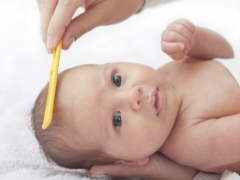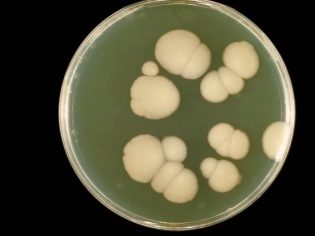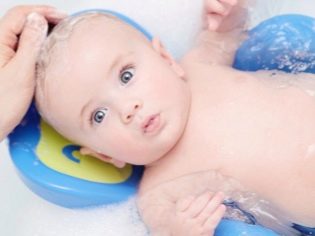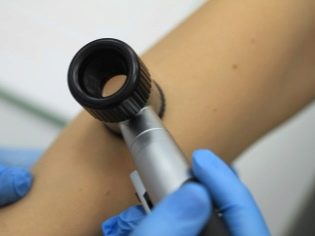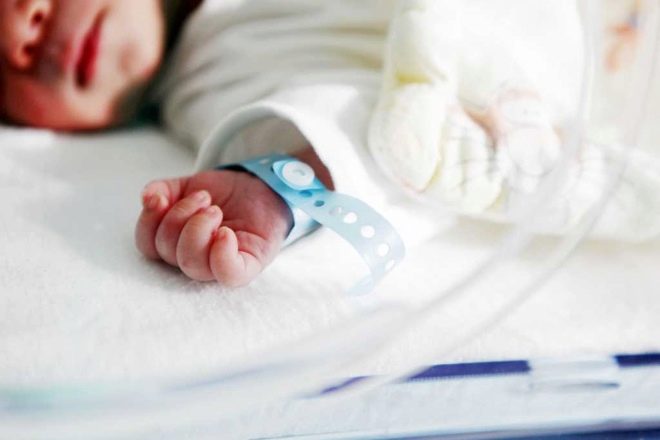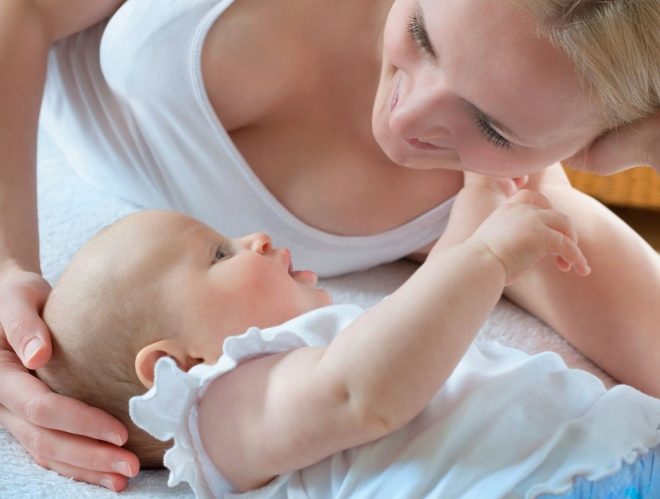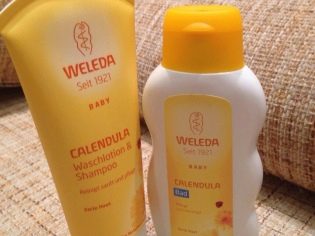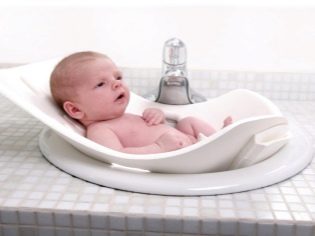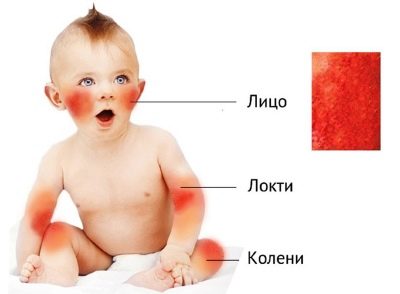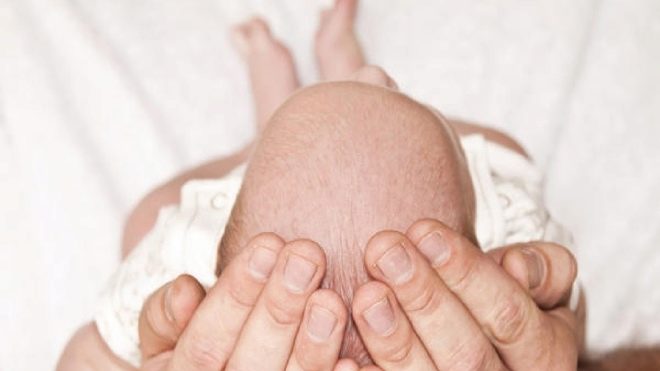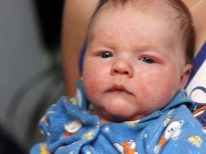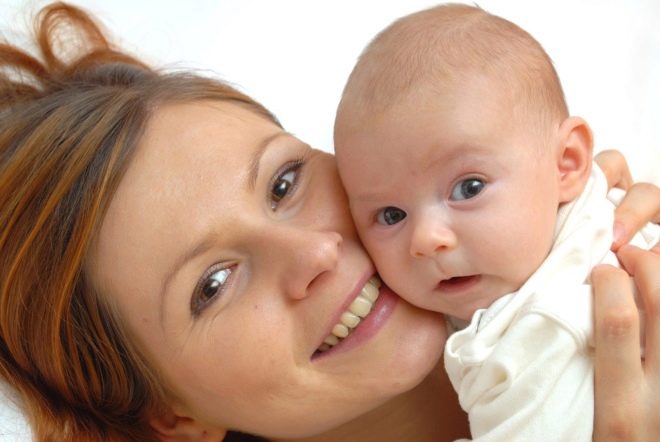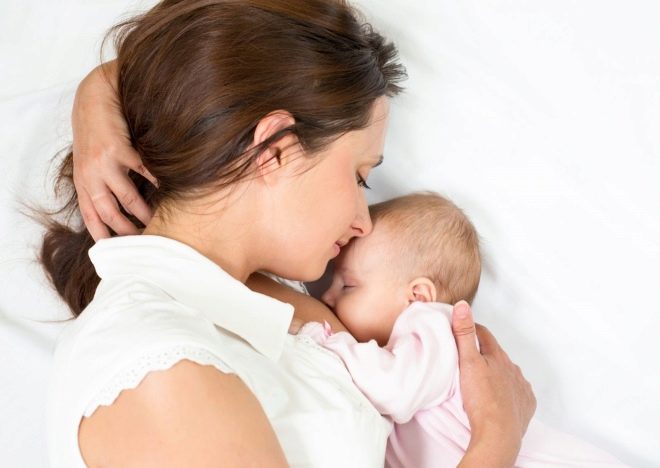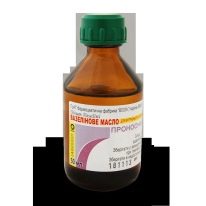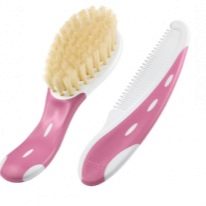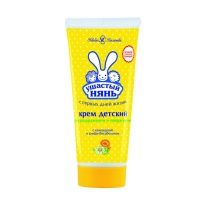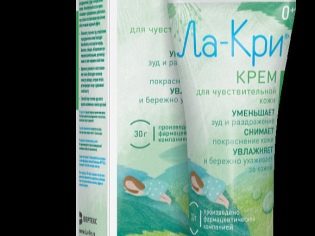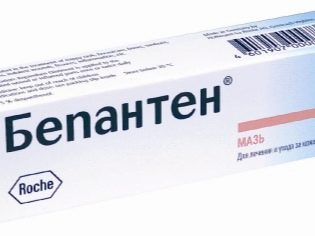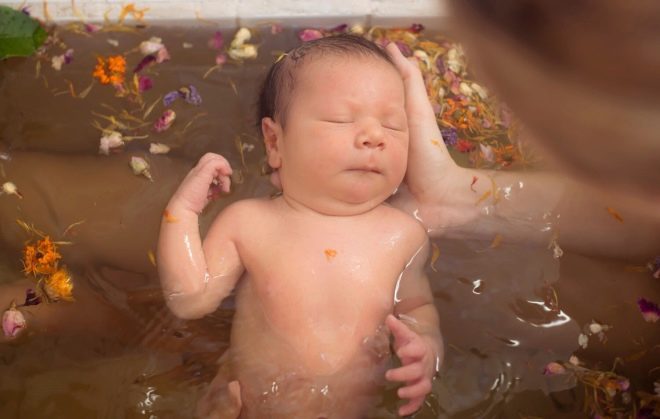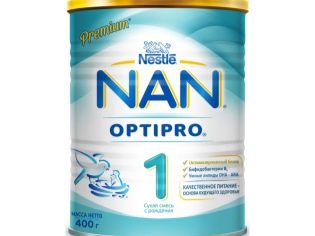Seborrheic dermatitis in infants and newborns
Newborns and children of the first year of life quite often “surprise” parents with a wide variety of skin rashes. One of the types of dermatitis - seborrheic - needs some clarification. About what it is and what to do if the child has dermatitis seborrhea, we will tell in this article.
What it is
Seborrheic dermatitis is a chronic inflammation of the upper layers of the skin. It should be noted that not all areas of the skin are affected, but only those where there is maximum accumulation of the sebaceous glands, for example, the scalp, face. The main pathogens of the disease are yeast-like fungi Malassezia restricta and Malassezia globosa.
Almost all people on the planet have these fungi that live well on the skin, being an integral part of its normal microflora. They "chose" places around the sebaceous glands is not accidental - the secret of these glands is an excellent nutrient medium for fungi.
In the process of life, these fungi secrete polyunsaturated acids that irritate the skin by reacting with certain substances that it contains.
A normal healthy organism can regulate the number of such fungi, however, changes in the hormonal balance, immune changes can lead to an increase in the number of colonies of fungi, and then irritation, peeling are inevitable. And they will appear exactly where sebum (fat) is produced the most.
Causes
In adults, seborrheic dermatitis is always an alarming symptom that sometimes accompanies quite serious illnesses. In newborns, such a form of skin inflammation in the vast majority of cases is a variant of the physiological norm. Thus, babies' skin is more delicate and thin, and the functions of the sebaceous glands are not yet perfect.
Therefore, from birth to six months, seborrheic dermatitis occurs to one degree or another in one in four to five babies.
Most doctors are inclined to believe that seborrheic manifestations in newborns are irrefutable evidence of the connection between the disease and hormonal "cataclysms" in the body. In the first months of life, the so-called maternal hormones, which the mother generously shared with the child, while he was still in her womb, strongly influence the child. For the same reason, seborrhea later appears in some adolescents at puberty. Hormonal riot - this is exactly the factor that triggers the activity of yeast-like fungi like Malassezia.
Affects the occurrence of such dermatitis and immunity of babies. After birth, it is only a set of antibodies obtained from the mother, that is, innate immunity. Your own baby’s body is extremely weak and imperfect. He has yet to be the formation and development. That is why the natural defense system is so difficult to cope with yeast-like fungi, if the child is not yet one year old.
The cause of the formation of characteristic formations on the head and torso can be hereditary factors - Often babies "inherit" seborrhea if it is chronically affected by one of the parents or next of kin. Moreover, it is not the disease itself that is inherited, but only a tendency to increased secretion of sebum, that is, the baby's glands work in a heightened mode and produce more fat than is required to ensure the protective functions of the skin.
Of the external factors, the winter season is the most favorable for the development of seborrheic dermatitis, excessive sweating of the infant, especially if it is wrapped up warmerly and “supplied” with a few caps to boot. Aggressive for baby skin toilet soap or other cosmetics, which parents can use when bathing a child, also provoke enhanced work of the sebaceous glands and the occurrence of seborrhea.
In the second stage, separate and disparate scales, having a grayish or yellowish color, are combined into a single short-shaped surface. Such seborrheic crusts can appear in a child not only on the head, but also on the neck, on the face, on the forehead, on the cheeks, on the body. Quite often, in this case, the groin and axillae are affected.
Symptoms
Characteristic signs of seborrheic dermatitis - is the appearance of scales, peeling. Most often this occurs in the scalp, because this is where the sebaceous glands in the infant work most actively. The fact is that the child’s head also performs an additional function - it participates in heat transfer. That is why a child who is hot, first of all sweats the head. Under the influence of heat and sweat, the sebaceous glands significantly intensify their activity.
Seborrhea does not resemble an allergy, and it is almost impossible to mix up the reaction to a new formula and the defeat of the sebaceous glands. The fact is that under the crusts there is no reddening zone characteristic of allergy. When removing a fragment of the crust, the skin under it remains light and eternal. In older children and adults, seborrhea may be pruritic. In the case of newborns, the doctors are almost unanimous - itching and discomfort do not cause him ailment.
Much depends on what type of seborrheic dermatitis is observed in a particular child. Medicine distinguishes three types of illness:
- Wet seborrhea. With it, the secretion of the sebaceous glands is increased, too much sebum is secreted.
- Dry seborrhea. When it scales have a dry appearance, they themselves easily fall away due to insufficient production of sebum.
- The combined (mixed) seborrhea. This type of disease combines the symptoms of the first two types.
Seborrhea does not affect the general condition of the child: it does not have any effect on either the appetite or the baby’s sleep.
Forecasts
Congenital seborrheic dermatitis, which the child received as a “gift” from someone from relatives, is practically not subject to correction. The treatment is mostly unsuccessful. With acquired disease, the prognosis is more optimistic. After eliminating the causes of the disease, the skin manifestations can be “won” pretty quickly.
In the case of newborn babies, congenital seborrhea can only be discussed in exceptional cases, since this genetic cause is quite rare.
The remaining factors that influence the development of such dermatitis are amenable to correction, and sometimes they pass on their own, as in the case of dermatitis, which depends on hormonal factors. In process of formation of own hormonal background, the seborrhea comes to naught. This usually occurs between the first half of the year and the year of life.
Treatment
Seborrheic dermatitis in a baby does not need medical treatment for at least one year. In most cases, he passes himself after 4-6 months of independent living. Only in rare cases korochkovye education on the head and skin persist up to 2-3 years.
Some hygiene and general compliance is usually sufficient. rules that allow the manifestation of such dermatitis to pass as soon as possible:
- Caps and hats at home are not needed. In any case, for a child with seborrheic dermatitis. Wearing a baby cap or hat should be only on the street, while dressing the baby should be due to the weather, because excessive sweating provokes the reproduction of fungi.From the same position it is necessary to review the air temperature in the room. It should be no higher than 20 degrees. In this climate, sweating is significantly reduced.
- Bathing needs only baby cosmetics.. It is not necessary to wash the child with shampoos and scum. It is enough if the parents use the most common baby soap for washing their hair once a week. Excessive use of even hypoallergenic soap, designed specifically for children, also violates the function of the sebaceous glands.
Get rid of seborrheic crusts can be quite simple. If the damage is extensive and delivers a lot of anxiety (mom, but not the baby!), Then you can use special antifungal shampoos. It is well known Nizoral Shampoo, Cebulex
Treatment of the scalp is better to start with the softening of the crusts. For this, grandmothers used heated sunflower oil. Today it is used, and petroleum jelly, and baby cream. After lubrication, you should wait about 15-20 minutes, gently comb all crusts with a comb or a special brush for the head (they are soft and easy to remove without pain), and then wash the child's head with shampoo with antifungal activity.
It is enough to do this once a week. More frequent washing and combing injure delicate skin. Completing water treatments is helpful in smearing places that are free of crusts, «Bepantenom"Or" La Cree ", means that moderately dries the inflamed areas of the skin, where necessary, and moisturize where the skin is too dry. Recently, the line of cosmetics has become very popular. "Emolium". For babies in this line, you can pick up a good moisturizer and baby moisturizing soap.
Treatment of severe forms of seborrheic dermatitis requires the use of medications, but only a doctor can prescribe them. Only a specialist can distinguish a physiological rash from a pathological rash that needs medical correction.
If the rash is spread to areas of the body, and the baby is anxious when touched, then ointments based on hydrocortisone or clotrimazole may be prescribed. If during the formation of crusts or inept attempts to remove them, a secondary bacterial infection has joined, ointments with antibiotics may be prescribed.
Compliance with seborrheic scab treatment rules will help avoid complications. They consist in a strict algorithm of parental actions:
- moisturizing and softening crusts;
- combing soft crusts;
- the washing up;
- treatment with moisturizing or drying creams, and when prescribed by a physician - drug.
Dry crust touch and try to eliminate mechanically absolutely impossible, it leads to skin injury and the accession of a secondary infection. Of folk remedies, pediatricians do not object to adding chamomile, oak bark and a string to the bathing water.
Practical advice
If the baby has seborrheic dermatitis, nursing mother should refuse to eat fatty milk, butter and dairy products with a high content of animal fat. It is better to give preference to low-fat kefir, milk with a fat content of not more than 1.5%. Mothers of babies who are breastfed should also refuse to accept high-carb foods, baking. Instead, you need to inject more liquid so that breast milk becomes less fat and sweet.
If the baby is bottle-fed, it is important to make sure that he is eating completely. adapted milk formula. If necessary, choose a different mixture, preferably marked “hypoallergenic” on the package. Such nutrition is more expensive, but for a child prone to seborrhea, it may well be sufficient to quickly and completely get rid of the symptoms of the disease.
It is important to review the whole approach to child hygiene.The cleaner his diapers are, the more often he will bathe without soap, the less he will sweat and overeat, the faster seborrhoeic “milky” crusts will pass without the likelihood of their return.
See the next video for all about seborrheic dermatitis in infants and newborns.
